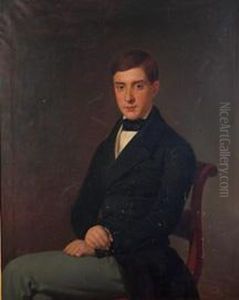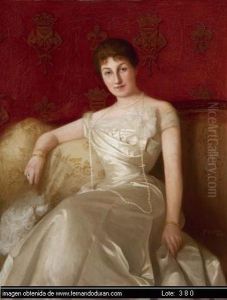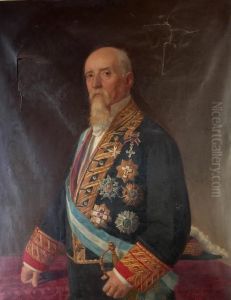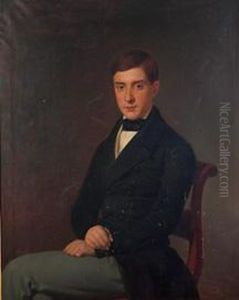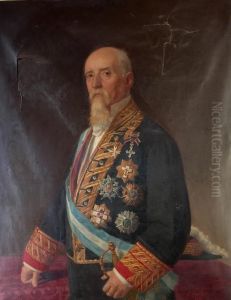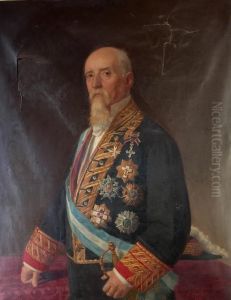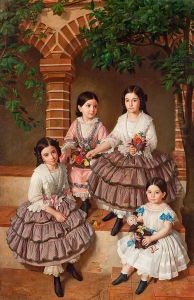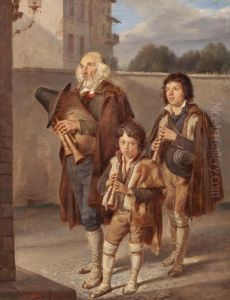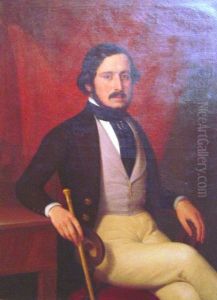Joaquin Espalter Y Rull Paintings
Joaquin Espalter Y Rull was a Spanish painter, born in Sitges, Catalonia, on March 23, 1809. He was known for his contributions to religious and genre painting during the 19th century. Espalter showed an inclination towards art from a very early age, and his talent was recognized and nurtured by his family and local patrons.
Espalter studied at the Escola de la Llotja in Barcelona, where he was a pupil of the prominent painter Antoni Viladomat. His education continued in Madrid, and later, with the support of a government scholarship, he was able to travel to Rome in 1833 to further his studies. It was a common practice of the time for artists to enhance their skills and knowledge by studying the great works of the Renaissance and Baroque periods in Italy. In Rome, Espalter immersed himself in the study of the old masters, which greatly influenced his artistic development.
During his stay in Rome, Espalter became associated with the Nazarene movement, a group of early 19th-century Romantic painters who aimed to revive honesty and spirituality in Christian art, often characterized by the use of bright colors and emphasis on emotion and pathos. Espalter's work from this period reflects the Nazarenes' influence, evident in his religious compositions.
After returning to Spain, he settled in Madrid and became a part of the vibrant cultural scene. Espalter's work gained recognition, and he was commissioned to create various religious works for churches and other institutions. His style, although influenced by his time in Rome, evolved to incorporate the changing tastes and artistic trends of the time, including elements of Realism.
In addition to his religious works, Espalter also painted portraits, historical scenes, and genre paintings, showcasing daily Spanish life. His paintings were well-received, and he exhibited in various venues, including the National Exhibition of Fine Arts in Madrid, where he won awards for his work.
Espalter's contribution to Spanish art was not limited to his paintings. He was also a teacher and served as the director of the Museo del Prado in Madrid from 1868 to 1873. In this role, he was responsible for significant improvements and reorganizations of the museum's collections. Espalter was a respected figure in the Spanish art world, and his influence extended to the next generation of artists through his teaching and curatorial work.
Joaquin Espalter Y Rull passed away on January 25, 1880, in Madrid. His legacy as a painter and educator left a lasting impression on Spanish art, bridging the gap between the classical traditions of the old masters and the evolving artistic currents of the 19th century.
